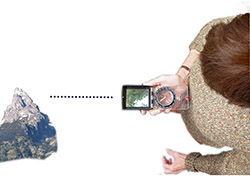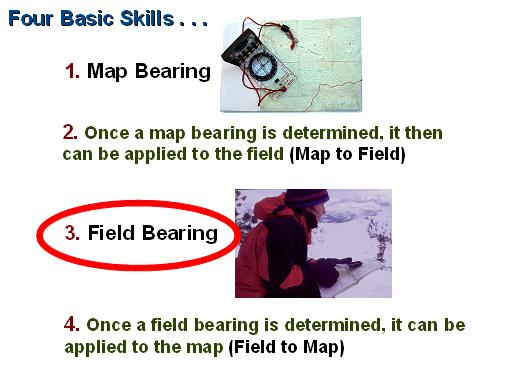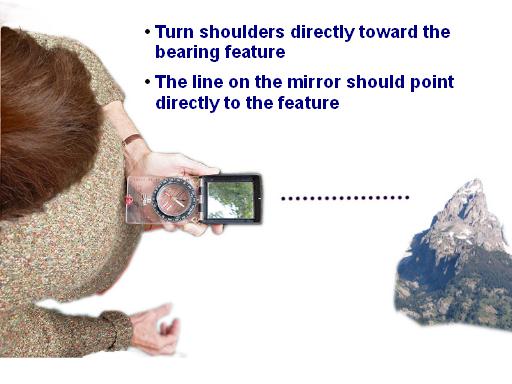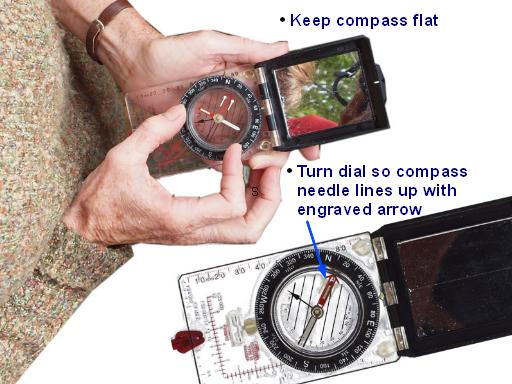 Using a Compass:
Using a Compass:
How to Take a Field Bearing
By Ron Watters, Professor Emeritus of Outdoor Education, Idaho State University
This is the continuation of a several part series on compass use. If you haven't already, you'll want to start on the introductory page found here: Compass Technique. This page is about how to take a field bearing.
(Or, if you'd rather pick from a list of topics, you'll find it here: Topic Index.)
Field Bearings
Field bearings are used to identify land features or to pinpoint where you are located. In this third basic compass skill, we'll learn how to take a field bearing.

As illustrated below, start by facing the feature to which you'll be taking the field bearing. It's important to turn your body toward the feature. Make sure that your shoulders are squared and that your body faces directly toward the feature.
Hold the compass close to your belly button. Keep it flat. The sighting line should be pointed toward the feature. (If you are using a compass without a mirror, make sure the direction of travel arrow points directly toward the feature)

Keeping the compass flat and holding it steady, turn the compass dial so the compass needle lines up with the engraved arrow:

That's it! The field bearing is read off the top of the compass. In the example above, it's 64 degrees.
There's also another way of sighting a compass with a mirror. Here's more information: Sighting.
NEXT: There are a number of uses of field bearings and I will cover those in the next compass skill: applying a field bearing to the map.
(Or, if you'd rather pick from a list of topics, you'll find it here: Topic Index.)
[END]
